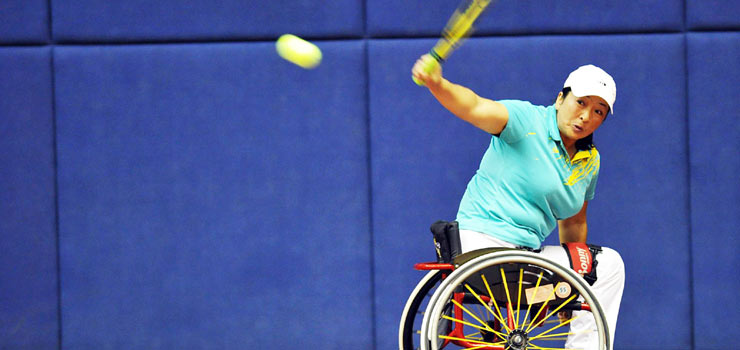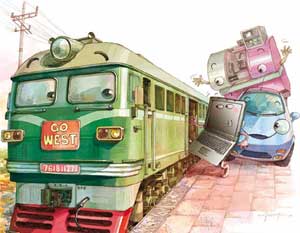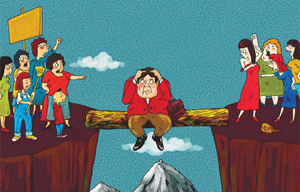Molding relationships
Updated: 2011-10-28 09:26
By Wang Chao (China Daily)
|
|||||||||
Although Wiertz finds it fascinating to blend Chinese elements into her works, she is not sure whether the Chinese audiences will accept her style.
"In the West, ceramic art is very individual and contemporary; but here it seems that the public appreciates traditional works more, and people copy the masters' works a lot."
Wiertz says she cannot force people to change, "so I don't expect the Chinese to buy my works".
However, Lei Jie, a ceramic studio owner in Jingdezhen and a graduate from the Jingdezhen Ceramic Institute, says that modern Western styles are well-received in the city.
"People in other places may find it hard to accept these ceramic sculptures, but in Jingdezhen, it is totally fine because people are open enough to embrace any ceramic artwork. After all, it has been the ceramic capital for more than 1,700 years."
Lei mentions that four years ago when he was still a college student studying ceramics, he had already cast molds from shrimp and fired them into porcelain works.
"One of my classmates even cast a dead dog into a clay mold," he says.
Li Wenying, the administrator of Sanbao International Ceramic Art Studio, says Wiertz and other foreign artists are bringing fresh blood into the old body of this ancient porcelain city.
"Previously, Jingdezhen used to be appreciated for traditional designs and skills, but through exhibitions and exchanges of these modern artists in recent years, people have began to accept alternative porcelain art."
Established in 1998, the Sanbao Ceramic Art Studio is spread over an area of 10,000 square meters. A foreign artist has to pay $200 (144 euros) every week for accommodation and access to the studios.
Coming from the same exchange program between Jingdezhen and Delft, Tineke van Gils says the "clay exchange" not only gives her a chance to learn about Chinese ceramic art, but also binds artists together.
"Wiertz and I used to meet from time to time in the Netherlands, but we never had a chance to work under the same roof. Now we are talking about creating a piece of work together."
As an artist with 30 years' experience of making teapots, van Gils is incorporating Chinese elements into her pots in a more straightforward way.
"When I was walking around the city, I saw all the soft clay molds drying on the streets. Usually people buy them to add paintings on the surface, but I bought it to create hybrid works."
She then puts the molds on the potter's wheels and adds Dutch-style bases and caps on them. "Then I paint tulips, the national flower of Holland, on one side of the pot, and I hire a worker from the local factory to paint traditional Chinese patterns on the other side. This way everybody can tell it is a combination of the Chinese and Dutch styles."
Van Gils agrees with Wiertz that this ancient city has the magic to spark inspiration. "When I was in the Netherlands, I used to stay at home and wonder what to create. But here in Jingdezhen, I threw all my preoccupied ideas away and easily found new ones."











